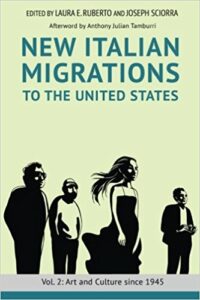Over the weekend, Dr. Joseph Sciorra presented his book Built with Faith: Italian American Imagination and Catholic Material Culture in New York City at the I Am Books bookshop in Boston.
News
Watch Livestream Recording of “Between Acceptance and Prejudice: One Hundred Years of Italian E/i[m]migration”
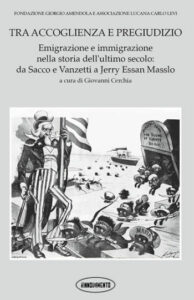 The symposium begins at 5:30 pm.
The symposium begins at 5:30 pm.
You can see the recorded event here: https://www.youtube.com/watch?v=vH3LilR6gGI.
Artist John Avelluto’s Exhibition “Goombarooch Resignified”
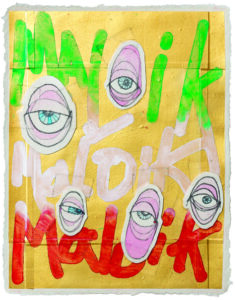 Visual artist John Avelluto revels in mash-ups of sounds, images, products, and ideas where Italy and the United States converge. His multimedia work plays with Italian American culture and the existing linguistic and visual repertoire of vernacular references that have gone underappreciated and unexamined. It stands at a crossroads of what in Italian is referred to as contaminazione, those hybrid moments and places where ideas and idioms collide across ever-shifting borders to create innovative articulations. As part of the artistic process, this Brooklyn-born and raised artist employs a time-consuming method of layering numerous coats of acrylic paint to create strata of simulacrum imitating salami slices, dripping pizza, and other items that he augments and then applies to a flat surface.
Visual artist John Avelluto revels in mash-ups of sounds, images, products, and ideas where Italy and the United States converge. His multimedia work plays with Italian American culture and the existing linguistic and visual repertoire of vernacular references that have gone underappreciated and unexamined. It stands at a crossroads of what in Italian is referred to as contaminazione, those hybrid moments and places where ideas and idioms collide across ever-shifting borders to create innovative articulations. As part of the artistic process, this Brooklyn-born and raised artist employs a time-consuming method of layering numerous coats of acrylic paint to create strata of simulacrum imitating salami slices, dripping pizza, and other items that he augments and then applies to a flat surface.
On view May 7–September 13, 2019
GALLERY HOURS: MONDAY–FRIDAY, 9AM–5PM
Exhibition Opening: Tuesday, May 7, 2019, 6pm
CLICK HERE TO SEE THE EXHIBITION CATALOG.
Conference Keynote: “Signing Italian/American Cinema: A More Focused Look”
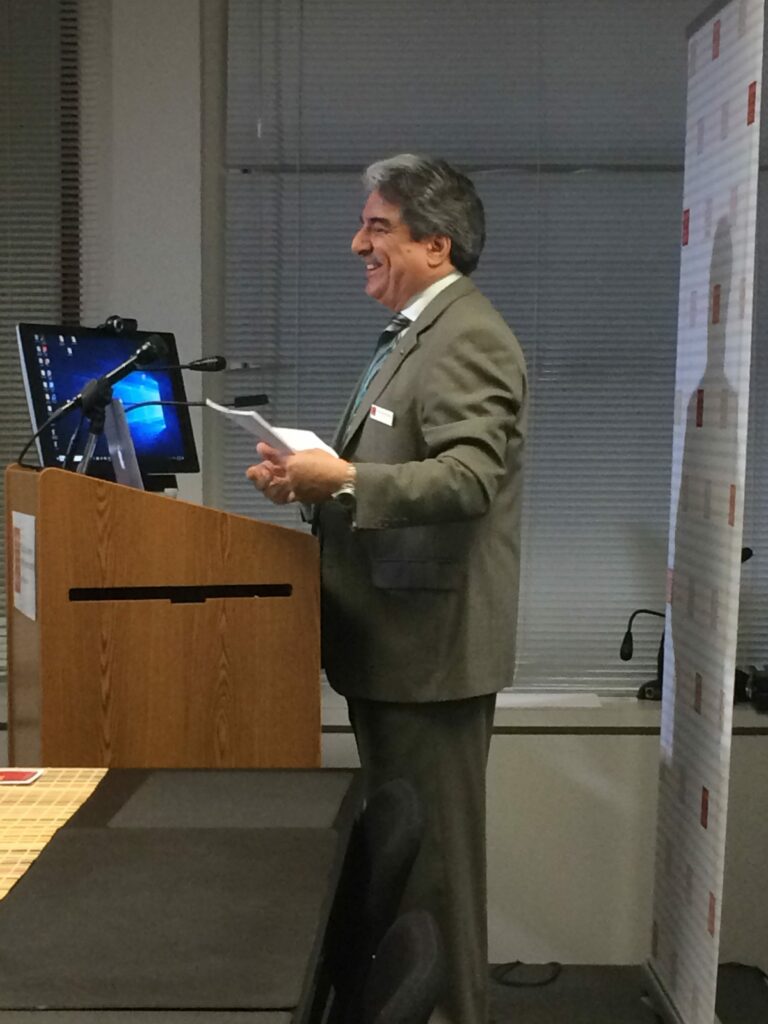 Dean Anthony J. Tamburri delivers the conference keynote address, “Signing Italian/American Cinema: A More Focused Look,” to an overflow audience of conference attendees.
Dean Anthony J. Tamburri delivers the conference keynote address, “Signing Italian/American Cinema: A More Focused Look,” to an overflow audience of conference attendees.
You can watch all the sessions of this year’s event, Eye-Centricity and the Visual Cultures of Italy and Its Diaspora, via the following links:
1 Architecture and Site-Specific Viewings
2 Signing Italian/American Cinema: A More Focused Look
4 Marketing Politics, Consumerism, and Tourism
5 Procession and Progression in the Mezzogiorno: Illuminating the Many Faces of the Mother
7 Spiritual View(ing)s in Italian American Writing and Visual Arts
Nota bene: Not every session will be livestreamed as some participators have opted out of the livestream.
Click here to read the complete conference program.
Anthony J. Tamburri and the Calandra Institute Receive Friend of NOIAW Award
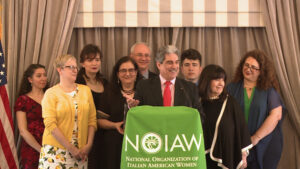
On Saturday, April 13, Dr. Donna Chirico, dean of York College, CUNY, on behalf of the National Organization of Italian American Women presented Dean Anthony Julian Tamburri and the John D. Calandra Italian American Institute with a Friend of NOIAW Award. In the audience were numerous luminaries including, but not limited to, New York First Lady Matilda Cuomo, Italian Consul Genral in New York Francesco Genuardi, and the two honorees for 2019 Sandra L. Depaolo and Dr. Judith A. Salerno. Incoming CUNY Chancellor Félix V. Matos Rodríguez congratulated all the honorees, via letter, saying of the Institute, “I am especially pleased to congratulate Dean Anthony and the Calandra Institute. … The Institute is well-known for its quality research and events that enrich our understanding of and appreciation for all things and people Italian–including the many Italian women and women of Italian heritage who make outsize contributions to society.”
Calandra’s Joseph Sciorra Pens Article in NYT
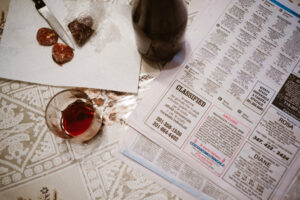
Click here to read Dr. Joseph Sciorra’s article accompanying Alessandro Cinque’s photographs of Italian Willamsburg, Brooklyn.
New Interview with Authors of New Italian Migrations to the United States
Click here to read a new interview with Laura Ruberto and Joseph Sciorra about their groundbreaking publications New Italian Migrations to the United States: Vol. 1: Politics and History since 1945 and New Italian Migrations to the United States: Vol. 2: Art and Culture since 1945.
Calandra’s Anthony J. Tamburri: Un biculturalismo negato. La letteratura «italiana» negli Stati Uniti (updated with video)
Together with a theoretical introduction, this volume presents five examples of “Italian/American” fiction writers and poets who live overseas—in our case the United States—and are part of what some have called “Italian literature” of the Italian diaspora. The five writers are representative of this long tradition of writing in Italian in the United States. As Tamburri argues in the first chapter, the notion of the “Italian” writer might benefit from a theoretical-methodological revision that concerns not so much the creative as the critical perspective. One should, as Tamburri states herein, abandon the need for a geographical notion as a decisive point for what is or is not “Italian literature” in order to recognize, to the contrary, the existence of a poly-linguistic aspect of the world of Italian Americans, which has given rise to a remarkably significant literary production in the language of Dante.
Buy the book here.
Christopher Castellani with Nicholas Boston
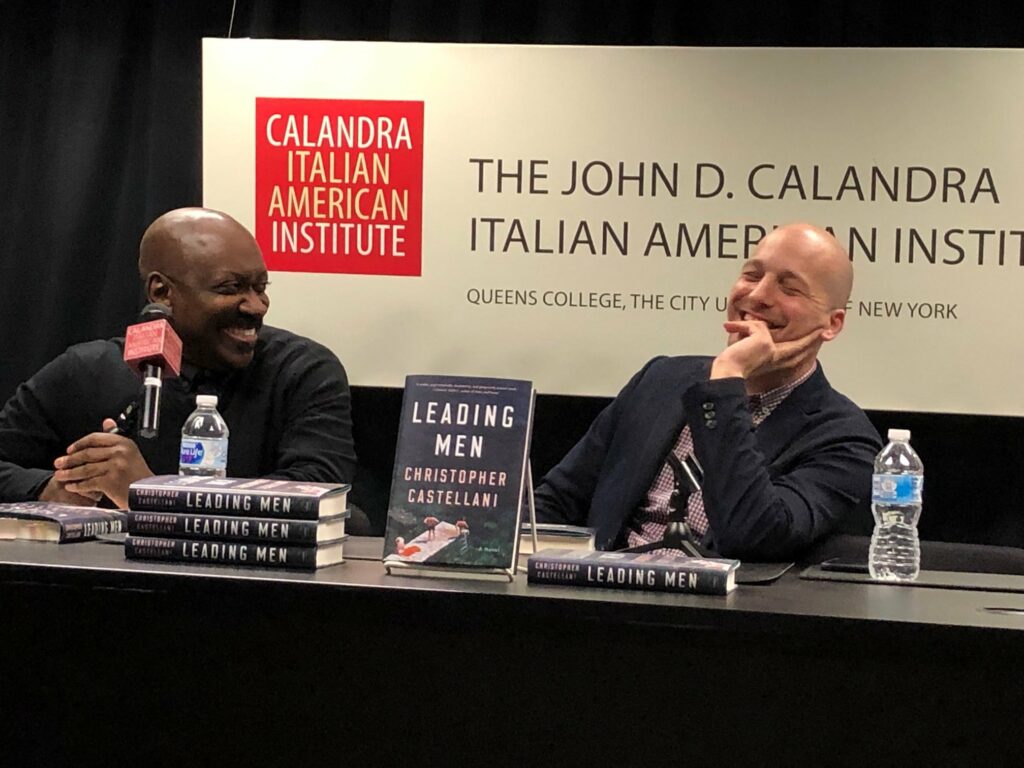
On Thursday, March 7, Christopher Castellani, author most recently of Leading Men, read from his historical novel about Tennessee Williams and Frank Merlo and then was in conversation with Lehman College’s Nicholas Boston about the novel, historical fiction, the figure of the stereotyped Italian American male, gender in fiction-writing, and about Castellani’s feeling that this book, his fourth, is in some sense his debut.
Buy the Leading Men here.
Assassins against the Old Order: Fraser M. Ottanelli Book Presentation 2/28
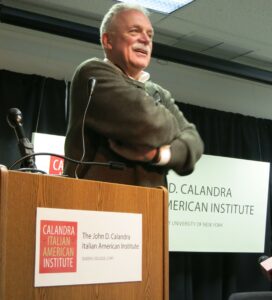 Fraser M. Ottanelli, of the University of South Florida, presented on February 28 his new, co-authored book, Assassins against the Old Order: Italian Anarchist Violence in Fin de Siècle Europe (University of Illinois Press, 2018).
Fraser M. Ottanelli, of the University of South Florida, presented on February 28 his new, co-authored book, Assassins against the Old Order: Italian Anarchist Violence in Fin de Siècle Europe (University of Illinois Press, 2018).
The image of the anarchist assassin haunted the popular European imagination in the late nineteenth century. Fear spawned a gross but persistent stereotype: a swarthy “Italian” carrying a bloody knife or revolver and bred to violence by radical politics, madness, innate criminality, and poor genes. The late Nunzio Pernicone and his co-author Fraser M. Ottanelli have dug into the historical, social, cultural, and political conditions behind the phenomenon of anarchist violence in Italy. Looking at political assassinations in the 1890s, they illuminate in this book the public effort to equate anarchy’s goals with violent overthrow.
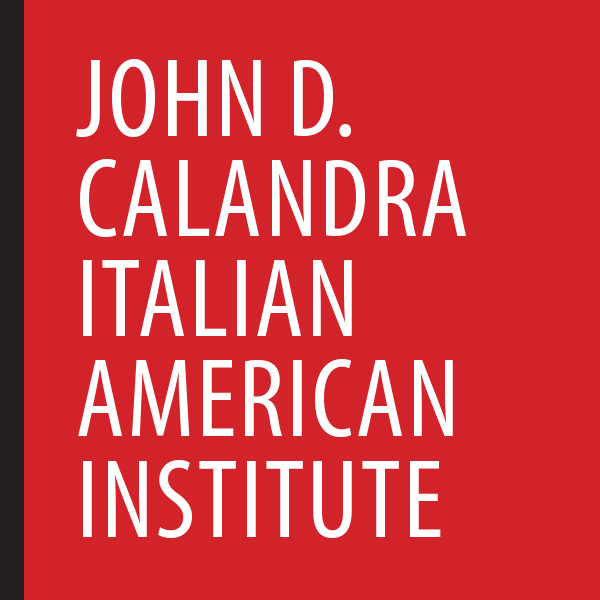
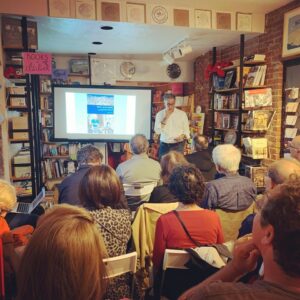
![Watch Livestream Recording of “Between Acceptance and Prejudice: One Hundred Years of Italian E/i[m]migration”](https://calandrainstitute.org/wp-content/uploads/2019/05/tra-accogl-350x541.jpg)
